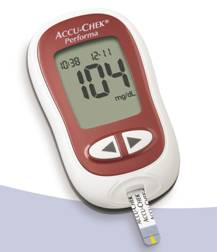 |
||||
|
||||
| 4. Intensive Blood Sugar Control proven the best for diabetes | ||||
Since decades, intensive blood glucose lowering had been proven to prevent eye, kidney and neuronal diseases in diabetes. Paradoxically, results from the ACCORD (The Action to Control Cardiovascular Risk in Diabetes ) study in 2008 showed an increase in deaths in the group of Type 2 diabetse patients who were made to undergo intensive treatment to bring their blood sugar levels down to near-normal levels. The mortality risk with the rapid strategy group increased approximately linearly from an HbA1c of 6% to 9%, the new analysis shows. It is to be noted that mortality was greater in the intensive group, compared with the standard group, only when average HbA1c was >7%. Those who easily achieved target A1c levels had the lowest risk of death, while those who had to struggle to achieve low A1c levels had the highest risk of death, Riddle said. In the ACCORD trial, which included more than 10,000 people with Type 2 diabetes, the intensive management group was trying to achieve an A1c level of less than 6 percent, which is the normal level. Most people with Type 2 diabetes have significantly higher A1c levels, according to background information in the study. Initially, the ACCORD study was scheduled to last for almost six years, but the study was stopped during the third year when the researchers discovered the increased death rate. At the time, there were 257 deaths in the intensive group vs. 203 deaths in the usual treatment group. When Riddle and his colleagues re-examined the data, they found that people in the intensive treatment group who still had higher A1cs were most at risk of mortality. |
 |
|||
| Read More | ||||
|
|
||||